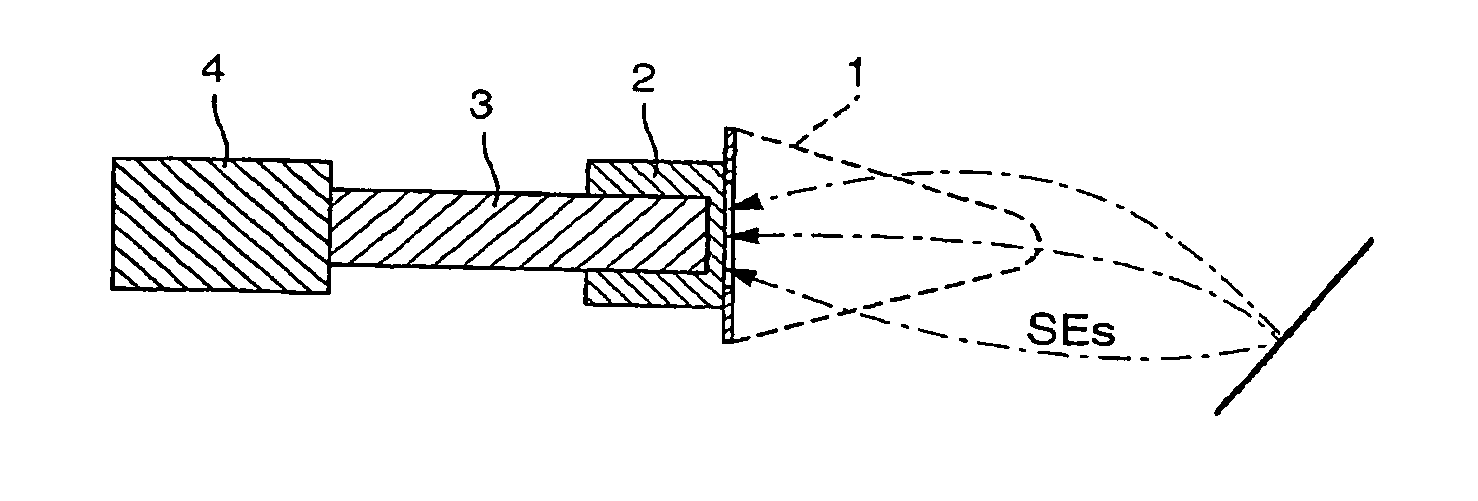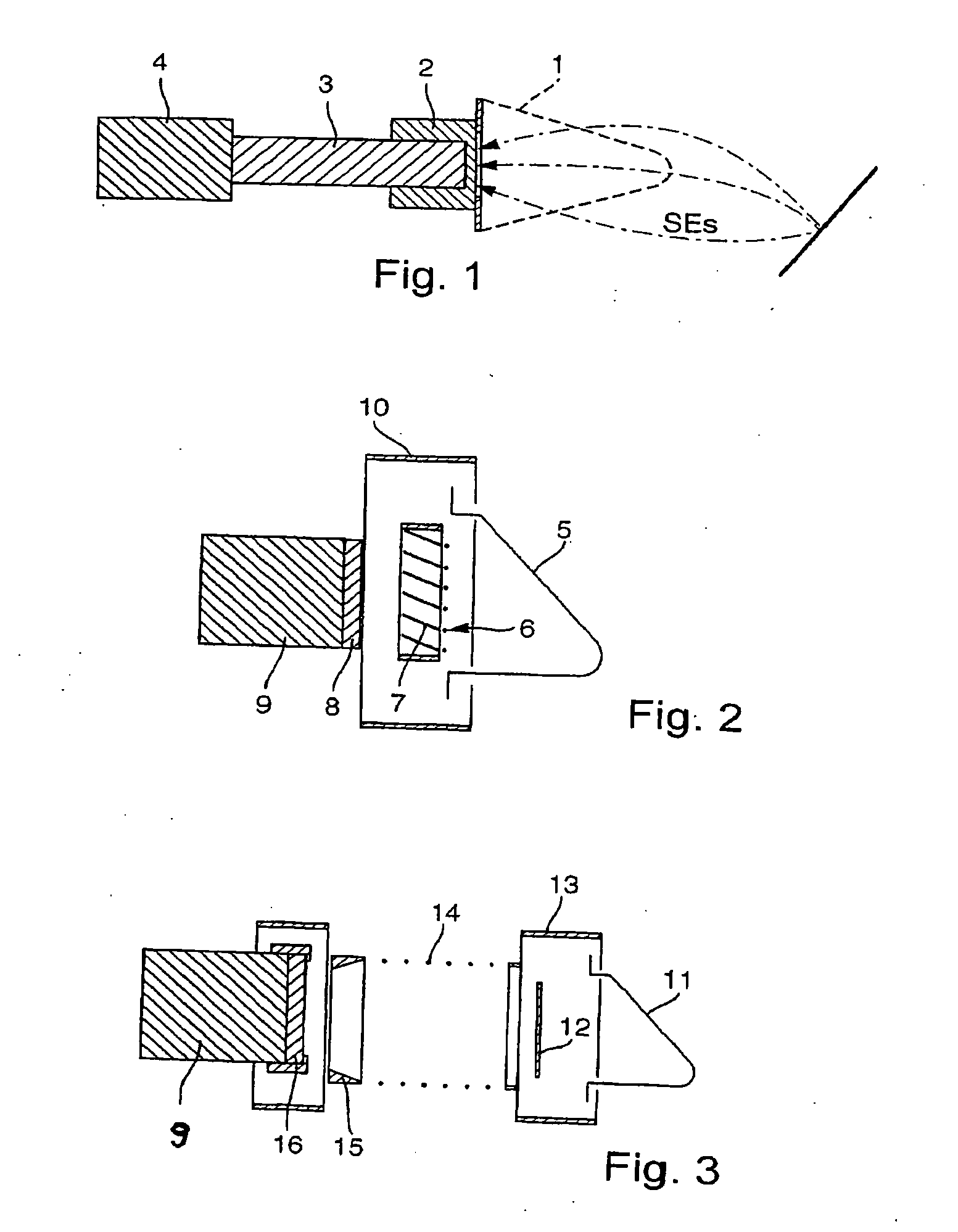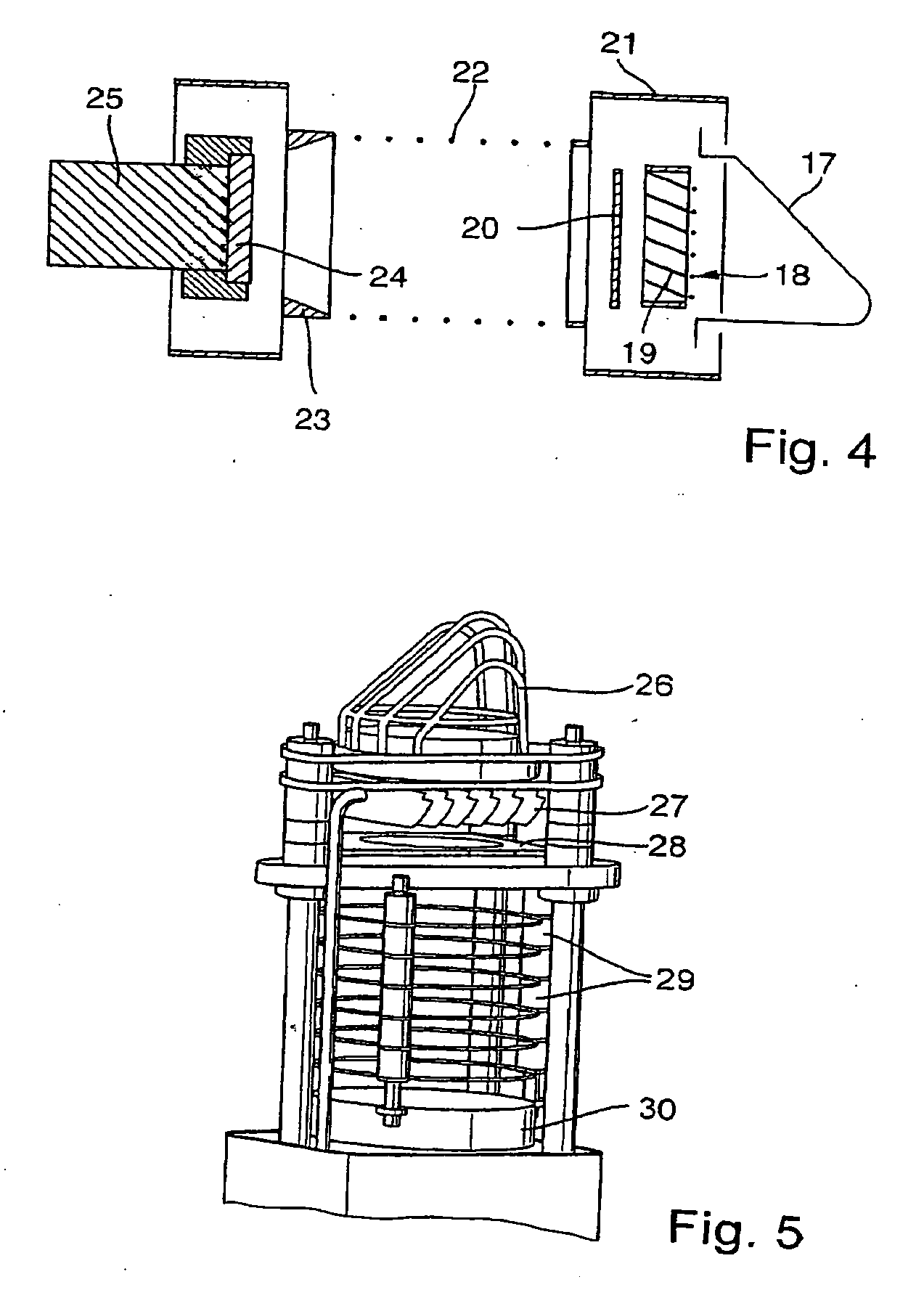Particle detector for secondary ions and direct and or indirect secondary electrons
a particle detector and electron detector technology, applied in the field of secondary electron detection, can solve the problems of low or no detection efficiency of secondary electrons, inefficient etd collecting grid, and ineffective etd for back scattered electrons (bse)
- Summary
- Abstract
- Description
- Claims
- Application Information
AI Technical Summary
Benefits of technology
Problems solved by technology
Method used
Image
Examples
Embodiment Construction
[0046] The invention is now described with reference to the embodiments shown in the drawings which show:
[0047]FIG. 1: a schematic view of ETD detector (prior art).
[0048]FIG. 2: a schematic cross section of low energy electrons or low energy ions detector
[0049]FIG. 3: a cross section of a direct SE and SE3 detector for electron beam systems such as SEM
[0050]FIG. 4: a cross section of EISE3 detector with options determined by electrode voltages to measure: Secondary electrons, or low energy secondary ions, or SE3 generated by BSE that hit various parts of the test chamber.
[0051]FIG. 5: an isometric side view of EISE3 detector
[0052]FIG. 6: one half of EISE3 detector in isometric view. The absent part is a mirror image of the shown structure.
[0053]FIG. 7: simulation calculations of SE with tilted collecting sparse grid at +400 V, Venetian Blind strips at +400 V, and phosphor screen at +10 kV. The trajectories have various initial electron energies 1) −2 eV, 2) −5 eV, 3) −10 eV, ...
PUM
| Property | Measurement | Unit |
|---|---|---|
| angle | aaaaa | aaaaa |
| voltages | aaaaa | aaaaa |
| voltage | aaaaa | aaaaa |
Abstract
Description
Claims
Application Information
 Login to View More
Login to View More - R&D
- Intellectual Property
- Life Sciences
- Materials
- Tech Scout
- Unparalleled Data Quality
- Higher Quality Content
- 60% Fewer Hallucinations
Browse by: Latest US Patents, China's latest patents, Technical Efficacy Thesaurus, Application Domain, Technology Topic, Popular Technical Reports.
© 2025 PatSnap. All rights reserved.Legal|Privacy policy|Modern Slavery Act Transparency Statement|Sitemap|About US| Contact US: help@patsnap.com



